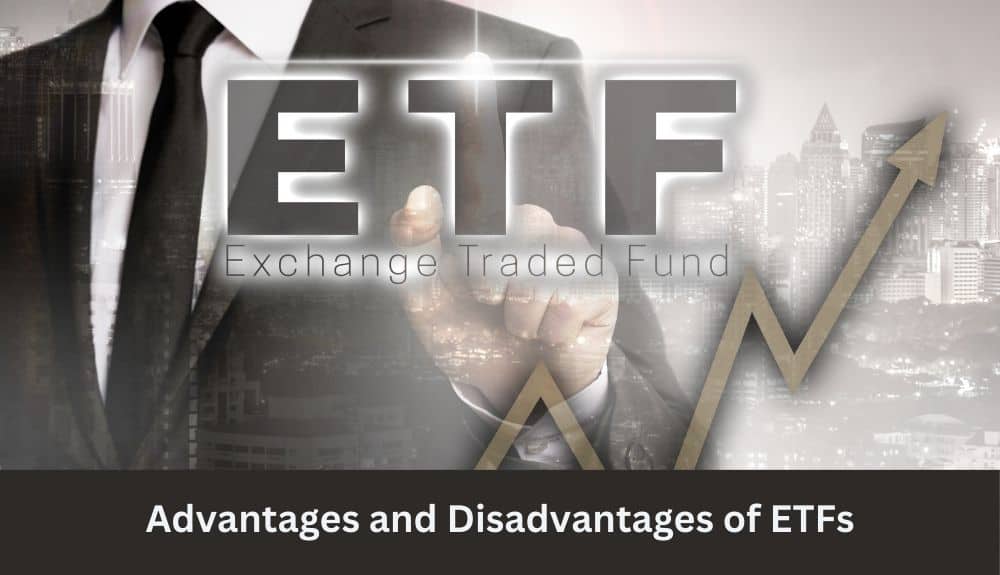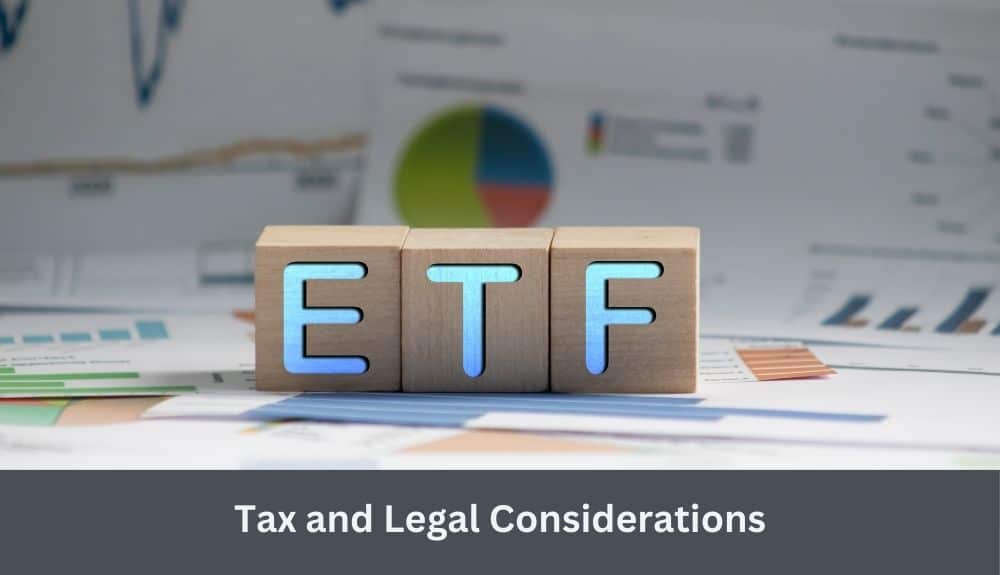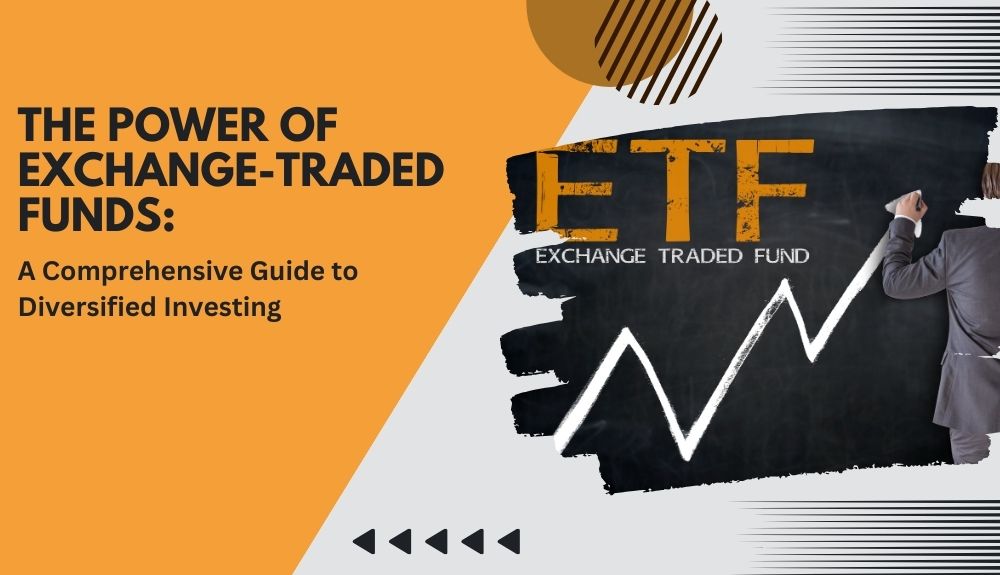Are you seeking to elevate your investment strategy beyond the conventional routes? Imagine a realm where you can effortlessly diversify your portfolio while managing risk effectively – welcome to the captivating world of exchange-traded funds (ETFs). In today’s dynamic financial landscape, ETFs have emerged as powerful tools for investors looking to broaden their horizons and achieve their desired financial outcomes.
Diving into the intricacies of ETFs opens a gateway to a myriad of opportunities and options. From understanding the underlying mechanisms of these investment vehicles to exploring the diverse range of ETF types, this comprehensive guide will equip you with the knowledge and insights needed to navigate the world of diversified investing successfully.
Join us on this journey where we unravel the unique advantages of ETFs, explore practical strategies for optimizing returns, and delve into the future trends that promise untapped potential in the investment industry. Embrace the power of ETFs and unlock the key to a diversified and thriving investment portfolio.
Introduction to Exchange-Traded Funds
Exchange-Traded Funds (ETFs) are a type of investment product that have gained significant popularity in recent years. They offer investors an opportunity to diversify their portfolios and gain exposure to a wide range of assets, all while enjoying the benefits of flexibility and transparency.
Unlike traditional mutual funds, ETFs trade on stock exchanges, just like individual stocks. This allows investors to buy and sell ETF shares throughout the trading day at market prices, providing them with liquidity and the ability to react quickly to market conditions.
One of the key advantages of ETFs is their ability to offer diversified investments. ETFs typically track a specific index or sector, such as stock market indices, bonds, commodities, or industry-specific indexes. By investing in an ETF, investors gain exposure to a basket of securities that reflect the performance of the underlying index or sector.
Another advantage of ETFs is their relatively low cost compared to other investment options. Since ETFs are passively managed, they tend to have lower expense ratios compared to actively managed mutual funds. This means that investors can enjoy the benefits of professional portfolio management at a lower cost.
Furthermore, ETFs provide transparency in terms of holdings and investment strategy. Investors can easily access information about the composition of the ETF, including the individual stocks, bonds, or other assets held by the fund. This transparency allows investors to make informed decisions and understand the risks associated with their investments.
Overall, ETFs offer a compelling investment option for those seeking diversification and flexibility. In the subsequent sections, we will delve deeper into the different types of ETFs, their advantages and disadvantages, and how to incorporate them into an investment strategy effectively.
What is an ETF?
Exchange-Traded Funds (ETFs) have gained significant popularity in the world of investing. They are investment funds that are traded on stock exchanges, providing investors with an easy and convenient way to gain exposure to a diversified portfolio of assets. Unlike mutual funds, which are priced at the end of each trading day, ETFs can be bought and sold throughout the trading day at market prices.
Structure and Characteristics
One key feature of an ETF is its structure. ETFs are typically structured as open-ended investment companies or unit investment trusts. This structure allows for the creation and redemption of shares, which helps to keep the share prices of ETFs in line with the value of their underlying assets.
Another characteristic of ETFs is their passively managed nature. Most ETFs aim to replicate the performance of a specific index, such as the S&P 500. This means that the ETF holds a basket of securities that mirrors the composition of the index. By doing so, investors can gain exposure to a broad market segment without having to buy each individual security.
Underlying Assets
ETFs can cover a wide range of asset classes, including stocks, bonds, commodities, and currencies. Stock ETFs are the most common type of ETF and provide investors with exposure to a diversified portfolio of stocks. Industry or sector ETFs focus on specific industries or sectors, allowing investors to target their investments based on their market outlook. Commodity ETFs provide exposure to commodities like gold, oil, or agricultural products. Currency ETFs enable investors to gain exposure to foreign currencies.
Differences from Mutual Funds
While both ETFs and mutual funds are investment vehicles, there are some key differences between them. One significant difference lies in their trading mechanism. ETFs can be bought and sold throughout the trading day, similar to individual stocks, whereas mutual funds are typically bought or sold at the net asset value (NAV) at the end of the trading day.
Another difference is the cost structure. ETFs generally have lower expense ratios compared to mutual funds. This is because ETFs are passively managed and aim to replicate the performance of an index, while mutual funds often have higher expense ratios due to active management and research efforts.
In conclusion, ETFs are investment funds that are traded on stock exchanges and provide investors with a convenient way to gain exposure to a diversified portfolio of assets. They differ from mutual funds in their trading mechanism and cost structure. Understanding the structure, characteristics, and underlying assets of ETFs is crucial for investors looking to diversify their investment portfolios effectively.
Types of ETFs
Exchange-Traded Funds (ETFs) offer investors a wide range of opportunities to diversify their investment portfolios and gain exposure to specific asset classes or sectors. In this section, we will explore various types of ETFs, each with its own unique characteristics and investment objectives.
Stock ETFs
Stock ETFs, also known as equity ETFs, are designed to track the performance of a specific stock market index or a basket of individual stocks. They provide investors with a convenient and cost-effective way to invest in a diversified portfolio of stocks without having to buy each stock individually.
For example, the SPDR S&P 500 ETF (SPY) tracks the performance of the S&P 500 index, which represents the 500 largest publicly traded companies in the United States. Other stock ETFs may focus on specific sectors or industries, such as technology, healthcare, or financial services.
Industry/Sector ETFs
Industry or sector ETFs allow investors to target specific sectors of the economy, such as energy, consumer goods, or technology. These ETFs provide exposure to a basket of companies operating within a particular industry, allowing investors to capitalize on the growth potential of that sector.
For instance, the Financial Select Sector SPDR Fund (XLF) tracks the performance of companies in the financial services sector, including banks, insurance companies, and brokerage firms. By investing in industry/sector ETFs, investors can strategically allocate their assets based on their outlook for specific sectors.
Commodity ETFs
Commodity ETFs offer exposure to physical commodities, such as gold, silver, oil, or agricultural products, without the need to own the physical assets directly. These ETFs typically hold futures contracts or other derivative instruments to track the price movements of the underlying commodities.
For example, the SPDR Gold Shares ETF (GLD) is one of the largest commodity ETFs and tracks the price of gold. By investing in commodity ETFs, investors can gain exposure to the commodity markets and potentially benefit from price fluctuations.
Currency ETFs
Currency ETFs allow investors to participate in the foreign exchange market, providing exposure to different currencies. These ETFs can be used as a hedging tool or to speculate on currency movements.
For instance, the Invesco CurrencyShares Euro Trust (FXE) tracks the performance of the euro against the U.S. dollar. Currency ETFs can be useful for investors looking to diversify their currency exposures or take advantage of currency trends.
Specialized ETFs
There are also specialized ETFs that focus on niche investment themes or strategies. These ETFs can include thematic ETFs, like renewable energy or cybersecurity, as well as smart-beta ETFs that follow alternative indexing methods.
For instance, Bitcoin ETFs track the price of Bitcoin, allowing investors to gain exposure to the cryptocurrency market without directly owning Bitcoin. These specialized ETFs cater to investors with specific investment interests or strategies.
By investing in different types of ETFs, investors can tailor their portfolios to meet their specific investment goals and risk tolerance levels. It is important to carefully evaluate each ETF’s investment objective, strategy, and underlying holdings before making any investment decisions.
In the next section, we will delve into the advantages and disadvantages of investing in ETFs, providing a comprehensive analysis of their potential benefits and risks.
Advantages and Disadvantages of ETFs

Exchange-Traded Funds (ETFs) have gained significant popularity among investors due to their unique advantages and potential for diversification. Understanding the benefits and drawbacks of investing in ETFs is crucial for making informed investment decisions. In this section, we will explore the advantages and disadvantages of ETFs.
Advantages of ETFs
1. Diversification: One of the key benefits of ETFs is their ability to provide instant diversification. ETFs typically hold a basket of securities, such as stocks or bonds, representing a specific index or sector. By investing in an ETF, investors gain exposure to a wide range of assets, reducing the risk associated with investing in individual stocks or bonds.
2. Lower Costs: ETFs generally have lower expense ratios compared to mutual funds. This is because ETFs are passively managed, meaning they aim to replicate the performance of an underlying index rather than actively selecting securities. As a result, ETF investors can benefit from lower management fees and operational costs.
3. Flexibility: ETFs offer investors flexibility in terms of trading. Unlike mutual funds, which are priced at the end of the trading day, ETFs can be bought or sold throughout the trading day at market prices. This allows investors to react quickly to market movements and take advantage of short-term trading opportunities.
4. Transparency: ETFs provide transparency in terms of their holdings. The composition of the ETF’s underlying assets is typically disclosed regularly, allowing investors to make informed decisions based on the fund’s holdings.
Disadvantages of ETFs
1. Market Volatility: Like any other investment, ETFs are subject to market volatility. Fluctuations in the prices of the underlying securities can directly impact the value of the ETF. Investors should be aware of the potential for short-term price fluctuations and be prepared for market volatility.
2. Tracking Error: ETFs aim to replicate the performance of an underlying index. However, due to various factors such as trading costs and tracking methodology, there can be a slight difference between the ETF’s performance and the performance of the underlying index. This deviation is known as tracking error and can impact the returns of the ETF.
3. Liquidity and Trading Volumes: While ETFs are generally liquid investments, some less popular ETFs may have lower trading volumes and limited liquidity. This can result in wider bid-ask spreads and potentially higher transaction costs when buying or selling shares of these ETFs.
4. Expertise Required: While ETFs provide diversification, investors still need to select the right ETFs based on their investment goals and risk tolerance. Evaluating factors such as expense ratios, liquidity, and underlying assets requires a certain level of expertise and research.
In conclusion, ETFs offer several advantages, including diversification, lower costs, flexibility, and transparency. However, it’s important to consider potential drawbacks such as market volatility, tracking error, liquidity concerns, and the need for expertise in selecting the right ETFs. By understanding these advantages and disadvantages, investors can make well-informed decisions when incorporating ETFs into their investment portfolios.
How to Buy ETFs
When it comes to buying exchange-traded funds (ETFs), there are a few steps you can follow to navigate the process with confidence. Whether you’re a beginner or a seasoned investor, understanding how to buy ETFs is essential for building a diversified investment portfolio. Here is a comprehensive guide to help you get started:
Finding an Investing Platform
The first step in buying ETFs is to find a reputable investing platform or brokerage account. There are numerous online brokers available that offer a wide range of investment options, including ETFs. It’s important to choose a platform that aligns with your investment goals, offers competitive fees, and provides the necessary tools and resources for research and trading.
Researching ETFs
Once you have selected an investing platform, it’s time to research ETFs. Begin by identifying your investment objectives and consider the asset classes or sectors you want to target. ETFs can provide exposure to various markets, including stocks, bonds, commodities, and currencies. Take advantage of the platform’s research tools and resources to compare different ETFs, evaluate their performance, and understand their underlying holdings.
Considering a Trading Strategy
Before making any ETF purchases, consider your trading strategy. Are you looking for long-term growth or short-term gains? Are you interested in actively managing your portfolio or taking a more passive approach? ETFs offer different investment strategies, such as index-tracking ETFs or actively managed ETFs. Evaluate your risk tolerance and investment horizon to determine the most suitable trading strategy for your needs.
Online Brokers vs. Traditional Brokers
It’s important to differentiate between online brokers and traditional brokers when buying ETFs. Online brokers typically offer lower trading fees and provide a user-friendly digital platform for executing trades. On the other hand, traditional brokers may offer personalized advice and a more hands-on approach to investing. Consider your preferences and level of expertise when choosing between online brokers and traditional brokers.
Remember to take your time and conduct thorough research before making any investment decisions. Read the fund’s offering document, which provides detailed information about the ETF’s objectives, holdings, fees, and risks. It’s always recommended to consult with a financial advisor or professional if you have any doubts or need specific investment advice.
As you embark on your ETF buying journey, keep in mind that investing involves risks, and the value of your investments may fluctuate. However, with careful consideration and a well-thought-out strategy, ETFs can be a valuable addition to your investment portfolio.
Remember, be patient, and stay focused on your long-term investment goals. By following these steps and conducting thorough research, you can confidently buy ETFs and take advantage of the benefits they offer in diversifying your investment portfolio.
What to Look for in an ETF
When it comes to selecting an exchange-traded fund (ETF) for your investment portfolio, it’s crucial to consider several factors that can greatly impact your returns. By understanding what to look for in an ETF, you can make informed investment decisions that align with your financial goals. Here are some key factors to consider:
Expenses
One of the primary advantages of investing in ETFs is their typically lower expenses compared to other investment options. When evaluating an ETF, pay attention to its expense ratio, which represents the annual fee charged to investors. Lower expense ratios mean more returns stay in your pocket. Additionally, consider any transaction fees or brokerage charges associated with buying and selling ETF shares.
Diversification
Diversification is a fundamental principle of successful investing, and ETFs excel in providing instant diversification. Look for ETFs that offer exposure to a broad range of assets or a specific market segment that aligns with your investment strategy. By diversifying your portfolio, you can potentially mitigate risk and optimize your chances of long-term growth.
Liquidity
Liquidity refers to an ETF’s ability to be easily bought or sold on the market. High liquidity ensures that you can enter or exit a position without significant price impact or difficulty. Consider the average daily trading volume and the bid-ask spread of an ETF as indicators of its liquidity. It’s important to choose ETFs with sufficient liquidity to ensure smooth transactions and minimize the risk of price discrepancies.
Track Record and Performance
Examining the historical performance of an ETF can provide valuable insights into its potential future returns. Review the fund’s total return over various time periods to gauge its consistency and stability. It’s also advisable to compare an ETF’s performance against its benchmark index or similar funds in the same category. Popular and well-performing ETFs often have a track record of generating consistent returns and attracting investors’ confidence.
To give you an idea of ETFs that have been well-performing and popular, here are a few examples:
1. Vanguard S&P 500 ETF (VOO): This ETF tracks the S&P 500 index, providing exposure to 500 large-cap U.S. stocks. It is known for its low expense ratio and broad market coverage.
2. iShares Core MSCI Emerging Markets ETF (IEMG): If you’re looking to invest in emerging markets, this ETF is a popular choice. It offers exposure to a diversified portfolio of emerging market stocks.
3. Invesco QQQ Trust (QQQ): This ETF focuses on the Nasdaq-100 index, which includes 100 of the largest non-financial companies listed on the Nasdaq stock exchange. It is popular among investors seeking exposure to technology and growth-oriented companies.
Keep in mind that past performance does not guarantee future results, so thorough research and monitoring are essential.
By considering factors such as expenses, diversification, liquidity, and performance, you can make an informed decision when selecting an ETF that aligns with your investment objectives. Remember, each investor’s goals and risk tolerance may vary, so careful consideration and due diligence are essential before making any investment decisions.
Tax and Legal Considerations

When investing in exchange-traded funds (ETFs), it’s important to consider the tax implications and legal aspects associated with these investment vehicles. Understanding the tax treatment of ETFs can help investors make more informed decisions and optimize their overall investment strategy.
Dividends and Capital Gains
One key tax consideration with ETFs is the treatment of dividends and capital gains. Like individual stocks, ETFs can generate dividends, which may be subject to taxation. Dividends can be classified as qualified or non-qualified based on certain criteria, and the tax rate may vary depending on an investor’s tax bracket.
Additionally, when selling ETF shares, investors may be subject to capital gains tax on any profits realized. The capital gains tax rate can differ depending on whether the investment was held for a short-term or long-term period. It’s important to consult with a tax professional to understand the specific tax implications based on individual circumstances and jurisdiction.
Tax-Efficient ETFs
Investors may also want to consider tax-efficient ETFs, which are designed to minimize tax liabilities. These funds employ strategies such as tax-loss harvesting and selective index sampling to optimize the tax treatment of dividends and capital gains. Tax-efficient ETFs can be particularly beneficial for investors in higher tax brackets or those with a significant investment portfolio.
Regulatory Considerations
In the United States, ETFs are regulated by the US Securities and Exchange Commission (SEC). The SEC plays a crucial role in ensuring investor protection and market integrity. Compliance with regulatory requirements allows investors to have confidence in the transparency and accountability of ETFs.
When investing in ETFs, investors should also carefully review the fund’s offering document, which provides important information about the fund’s objectives, strategies, and risks. Conducting thorough research and reading the offering document can help investors make well-informed decisions and align their investments with their financial goals.
In conclusion, considering the tax implications and regulatory framework is essential when investing in ETFs. By understanding the tax treatment of dividends and capital gains, exploring tax-efficient ETF options, and being aware of regulatory considerations, investors can make informed decisions and maximize the potential benefits of ETF investing.
Evaluating ETFs
When it comes to investing in exchange-traded funds (ETFs), evaluating them thoroughly is crucial. This section will guide you on how to evaluate ETFs effectively, considering key factors such as expenses, diversification, and liquidity. By following these guidelines, you can make informed decisions to optimize your investment strategy.
Consider the Expenses
The expense ratio is an important factor to consider when evaluating ETFs. This ratio represents the annual fee charged by the fund manager for managing the ETF. Lower expense ratios are generally favorable as they indicate lower costs, allowing you to keep more of your investment returns. Compare the expense ratios of different ETFs within the same category to identify cost-effective options.
Assess Diversification
Diversification is a crucial aspect of any investment portfolio. When evaluating ETFs, analyze their holdings to ensure they align with your portfolio diversification goals. Verify whether the ETF includes a broad range of securities and if it covers multiple sectors or asset classes. Understanding the underlying assets can help you determine if the ETF aligns with your investment objectives.
Evaluate Liquidity
Liquidity refers to how easily an ETF can be bought or sold in the market without significantly impacting its market price. Higher liquidity is beneficial as it allows you to enter or exit a position without incurring substantial costs. Check the average daily trading volume of the ETF and ensure it meets your desired liquidity requirements. Additionally, examine the bid-ask spread—the difference between the buying and selling prices—to assess the cost of trading the ETF.
Read the Fund’s Offering Document
When evaluating ETFs, it is essential to read the fund’s offering document, such as the prospectus or the fact sheet. These documents provide valuable information about the fund’s investment strategy, objectives, holdings, and risks. Pay close attention to the fund’s investment methodology, benchmark index, and any specific investment restrictions. Understanding these details will help you assess whether the ETF aligns with your investment goals.
Conduct Thorough Research
Before making any investment decisions, conduct thorough research on the ETFs you are considering. Review the performance history of the ETF over different timeframes and compare it to its benchmark index. Analyze the fund manager’s track record and expertise in managing similar ETFs. Reading research reports, articles, and reviews from reputable sources can provide additional insights into the ETF’s performance and potential risks.
Remember, evaluating ETFs requires careful consideration of various factors such as expenses, diversification, and liquidity. By assessing these aspects and conducting thorough research, you can make well-informed decisions to create a diversified and successful investment portfolio.
The Future of ETFs
As the investment landscape continues to evolve, exchange-traded funds (ETFs) are poised to play an increasingly significant role in the financial industry. The future of ETFs looks promising, with ongoing research and innovations paving the way for new possibilities. One notable development is the integration of machine learning in ETF management. This cutting-edge technology allows for more sophisticated analysis and decision-making, potentially enhancing the performance and efficiency of ETFs.
Machine learning algorithms can process vast amounts of data and identify patterns that might not be easily discernible to human investors. By utilizing this technology, ETF managers can make data-driven investment decisions and potentially unlock new opportunities for higher returns. Additionally, the use of machine learning can help identify and manage risk more effectively, as algorithms can continuously monitor market trends and adapt portfolios accordingly.
Another future trend for ETFs is the continued expansion of available investment options. With a wide range of asset classes already covered by ETFs, there is potential for further diversification and specialization. For example, we may see the development of ETFs targeting specific industries, emerging markets, or niche investment themes. This expansion will provide investors with even more choices for tailoring their portfolios to specific investment goals and preferences.
Regulatory advancements will also shape the future of ETFs. As the industry matures, regulators are likely to refine and clarify rules around ETF structures and operations. This will enhance transparency and investor protection, ensuring that ETFs remain a safe and reliable investment vehicle. Additionally, regulatory changes may bring about new opportunities, such as the introduction of innovative ETF structures or new regions allowing ETF trading.
In conclusion, ETFs are poised for a promising future in the investment industry. Ongoing research and innovations, including the integration of machine learning, open up new possibilities for increased performance and risk management. The expansion of available investment options and regulatory advancements will further enhance the versatility and reliability of ETFs. As investors continue to seek diversified and efficient investment strategies, ETFs are expected to play a crucial role in achieving their financial goals.
Conclusion
In conclusion, exchange-traded funds (ETFs) offer a compelling investment option for those looking to diversify their portfolios. Throughout this comprehensive guide, we have explored the various aspects of ETFs, including their structure, types, advantages, and considerations.
By investing in ETFs, investors can benefit from diversification, as these funds hold a variety of assets across different sectors and industries. This diversification helps mitigate risks associated with individual stocks or assets. Additionally, ETFs often come with lower costs compared to mutual funds, making them a cost-effective investment option.
When buying ETFs, it is important to carefully evaluate the fund’s expenses, diversification, and liquidity. Conducting thorough research and considering factors such as expenses and performance history can help investors make informed decisions.
Looking ahead, ETFs continue to gain popularity and demonstrate promising potential in the investment industry. Ongoing research and innovations, including the use of machine learning in ETF management, further enhance their appeal.
Incorporating ETFs into an investment portfolio can offer numerous benefits, including flexibility, lower costs, diversification, and potential for long-term growth. By carefully considering the factors discussed in this guide, investors can leverage the power of ETFs to achieve their financial goals.
Remember to consult with a financial advisor or conduct additional research before making any investment decisions.






